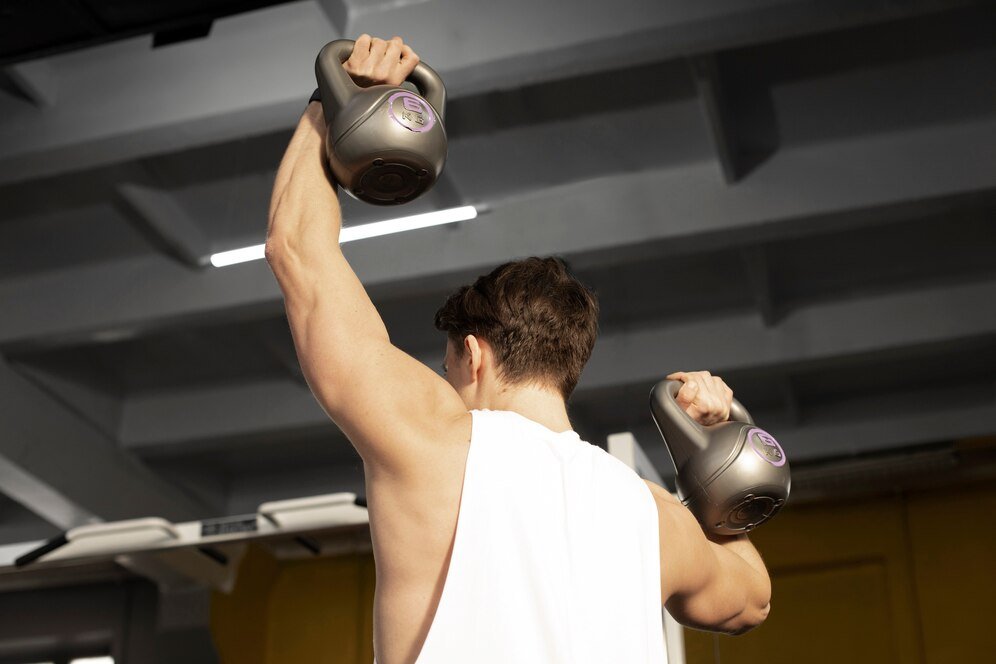Are you looking for ways to alleviate the aches and pains associated with scoliosis?
The curved-spine condition can be difficult to manage, but certain stretching exercises specifically target areas of discomfort.
Instead of trying random stretches from online tutorials, read ahead and learn our expert’s top 6 best stretches for individuals with scoliosis.
With this guide in your healthcare toolkit, you'll be able to work toward a stronger posture and a more comfortable life.
Ready to give it a try?
Related: Best Stretches For CrossFit
Best Stretches & Exercises For Scoliosis
Let’s take a look at the scoliosis stretches and workouts for pain relief:
1. Cat-Cow Stretch

The Cat-Cow Stretch is a beneficial exercise for individuals with scoliosis as it helps to improve spinal flexibility and mobility.
The rhythmic motion of arching and rounding the back encourages gentle stretching of the spine, promoting better alignment and reducing stiffness.
This stretch also engages the muscles along the spine, enhancing overall core strength, which can contribute to better support for the spine in individuals with scoliosis.
Step-By-Step Guide:
- Start on your hands and knees in a tabletop position, ensuring wrists are directly under shoulders and knees under hips.
- Inhale deeply as you arch your back, dropping your belly towards the floor. Lift your head and tailbone towards the ceiling, allowing your spine to curve naturally (Cow Pose).
- Exhale slowly as you round your spine, tucking your chin to your chest and drawing your belly button towards your spine (Cat Pose).
- Repeat this flowing motion, synchronizing your breath with the movements. Continue for 1-2 minutes, gradually warming up your spine.
2. Child's Pose

Child's Pose is a restorative stretch that can be particularly soothing for those with scoliosis.
By elongating the spine and gently stretching the back muscles, this pose helps release tension in the lower back and shoulders.
It encourages relaxation and can contribute to improved posture over time. Incorporating Child's Pose into a regular stretching routine for scoliosis may aid in relieving discomfort and promoting a greater sense of ease in the spine.
Step-By-Step Guide:
- Begin in a tabletop position on your hands and knees.
- Sit back on your heels, extending your arms forward on the floor.
- Lower your chest towards the ground, allowing your forehead to rest on the mat.
- Extend your arms fully, feeling a gentle stretch along your back and shoulders.
- Hold this position for 1-2 minutes, focusing on deep, steady breaths and allowing your body to relax into the stretch.
3. Seated Spinal Twist

The Seated Spinal Twist is valuable workout for scoliosis as it targets the rotational aspects of the spine.
This stretch helps to release tension in the muscles surrounding the spine and promotes increased flexibility in the thoracic and lumbar regions.
By incorporating this twist, individuals with scoliosis may experience enhanced mobility and reduced stiffness, contributing to a more balanced and comfortable spine.
Step-By-Step Guide:
- Sit with your legs extended straight in front of you.
- Cross one leg over the other, placing the foot flat on the floor outside the opposite knee.
- Inhale to lengthen your spine, then exhale as you twist towards the bent knee, placing the opposite elbow on the outside of the knee.
- Hold the stretch for 30 seconds to 1 minute, feeling the rotation through your spine.
- Inhale to unwind, then switch sides and repeat the stretch.
4. Sphinx Pose

Sphinx Pose is beneficial for those with scoliosis as it gently engages and stretches the muscles along the spine.
By lifting the chest while keeping the lower body on the ground, this pose promotes extension in the spine, helping to counteract the effects of scoliosis.
Regular practice of Sphinx Pose may improve posture and increase comfort by fostering strength and flexibility in the back muscles.
Step-By-Step Guide:
- Lie on your stomach with your legs extended behind you and the tops of your feet on the mat.
- Place your elbows directly under your shoulders, with forearms resting on the ground.
- Inhale as you lift your chest off the ground, keeping your hips and thighs on the mat.
- Press your forearms into the ground for support and gently arch your upper back.
- Hold Sphinx Pose for 1-2 minutes, breathing deeply and feeling the stretch in your lower back.
5. Thread the Needle Pose

Thread the Needle Pose is an effective stretching exercise for scoliosis as it targets the upper back and shoulders.
This stretch helps release tension in the muscles surrounding the spine and encourages improved thoracic mobility.
By threading one arm under the other, individuals with scoliosis can experience a gentle twist that may contribute to a greater sense of spinal balance and relief from discomfort.
Step-By-Step Guide:
- Begin on your hands and knees in a tabletop position.
- Inhale as you reach your right arm towards the ceiling, opening your chest (Thread the Needle setup).
- Exhale as you thread the right arm under your left arm, lowering your right shoulder and cheek to the mat.
- Extend your left arm forward or reach it to the right, feeling a stretch through the upper back and shoulder.
- Hold the position for 30 seconds to 1 minute, breathing deeply.
- Inhale to return to the tabletop position, then repeat on the other side.
6. Shoulder Blade Squeeze

The Shoulder Blade Squeeze is a simple yet effective stretch for individuals with scoliosis.
This stretch promotes awareness of the muscles surrounding the spine by consciously engaging and releasing the shoulder blades.
Regular practice can help strengthen the upper back and improve posture, providing additional support to individuals with scoliosis. The controlled movements of the Shoulder Blade Squeeze contribute to overall spinal health and may reduce tension in the upper back.
Step-By-Step Guide:
- Sit or stand comfortably with a straight spine.
- Inhale as you squeeze your shoulder blades together, opening your chest.
- Exhale as you release the squeeze and slightly round your upper back.
- Repeat this movement for 1-2 minutes, focusing on the contraction and release of your shoulder blades.
- You can perform this stretch seated or standing, making it a convenient option for various settings.
Wind-Up
So, there you have it – six of the best stretches for people who suffer from scoliosis.
Hopefully, this blog post has given you detailed information and a sense of how stretching can help to relieve some of your pain or discomfort associated with scoliosis.
While not all stretching regimens may work for everyone, always check with a doctor before starting any new physical activity.
Start small and build up from there in order to avoid injury.



